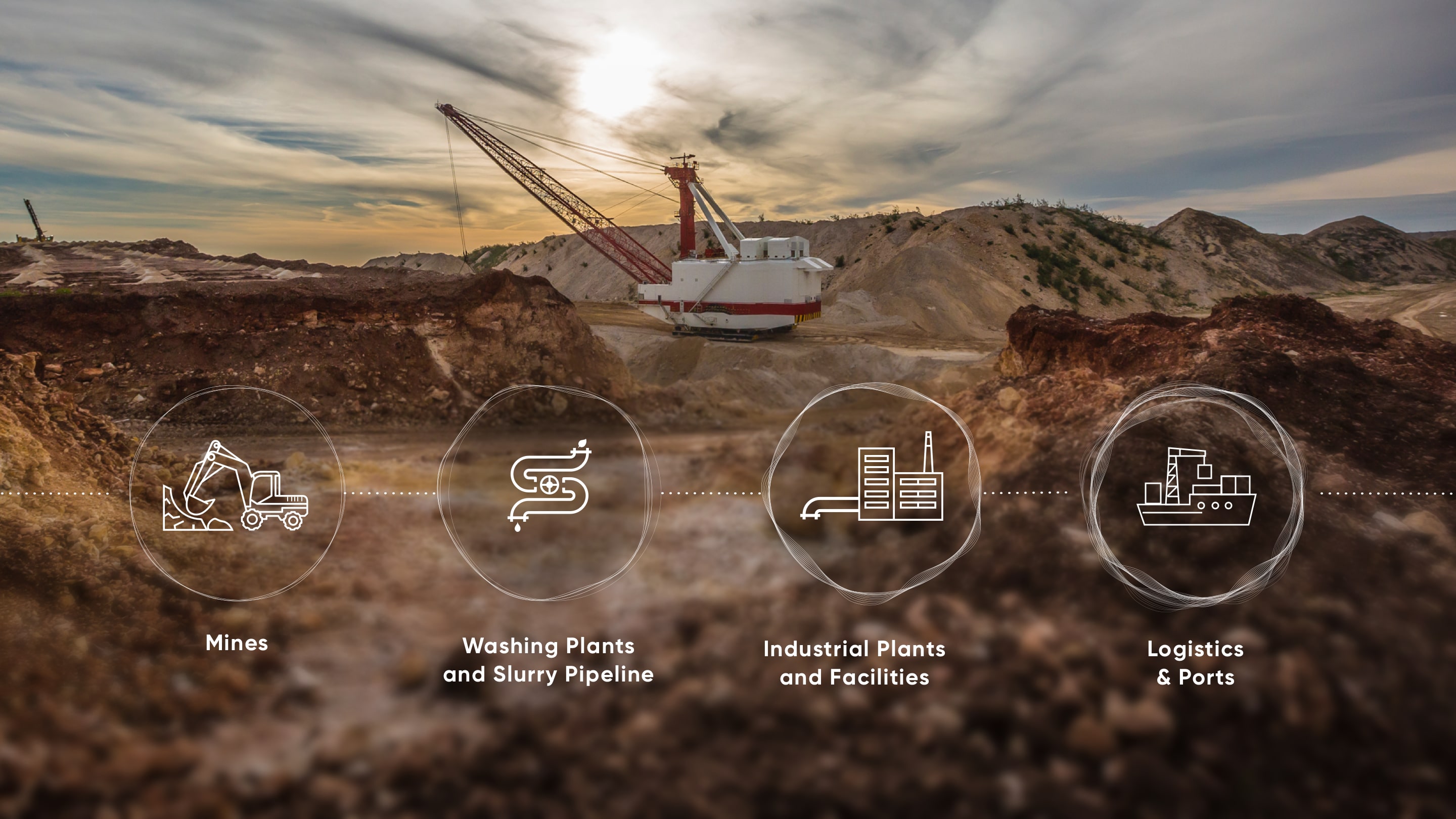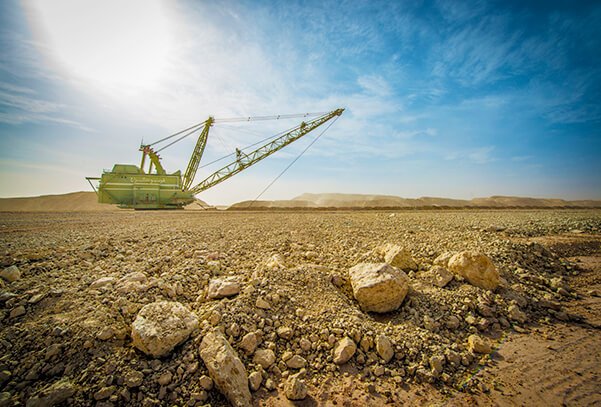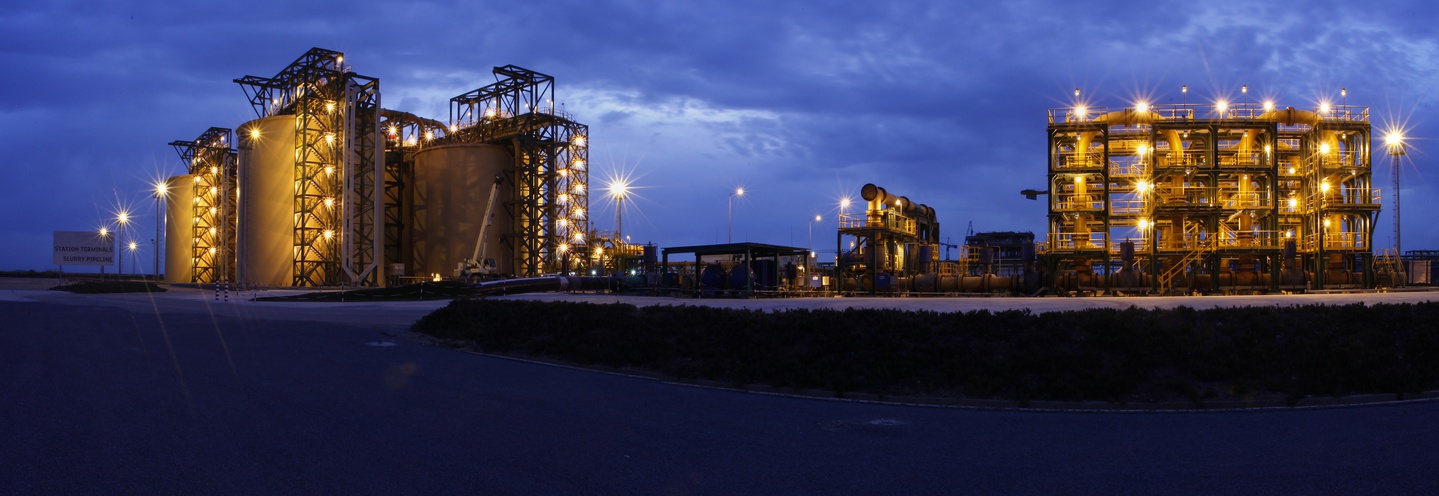Our operations span the entire phosphate value chain, from mining to processing and export.
It's an integrated chain of four phosphate mines, two processing plants, and a network of ports and wharfs. We're always improving how we work – from implementing more efficient processes that use less water and energy, to finding new ways to maximise the value of phosphate.

Our approach to sustainability is transforming how we work. As part of creating a sustainable future, we’ve developed better ways to extract and transport phosphate, using less water and less energy. As we continue to improve our process and technology, we’ll be able to produce more with less: improving efficiency and reducing emissions.

Khouribga
OCP's first mine in Khouribga opened in 1921 and is home to the majority of Morocco’s phosphate reserves, producing 70% of the Group's output. Phosphate is transported by our 187km slurry pipeline to the processing plant at Jorf Lasfar, and by rail to Casablanca for the export of unprocessed rock.
Benguerir and Youssoufia
The open-pit mine at Benguerir is one of OCP’s most important research activities, as well as being fully active as a mine. A testing site and Living Lab location for UM6P, the mine is open to the scientific community for research purposes. This project places OCP at the cutting edge of technological progress in the mining industry.
Our mines at Benguerir and Youssoufia together make up the Gantour system, the third-largest phosphate mine in the world. Phosphates from Gantour are transported to Safi for processing and export.

Boucraa
The mine at Boucraa in the Moroccan Sahara accounts for 8% of OCP Group’s total rock output, which is transported for export by the world’s longest conveyor belt – it’s 102km long - to the beneficiation plant and wharf at Laâyoune on the coast. We are also constructing a world-leading chemical and fertilizer plant at our site in Laâyoune. 100% of Phosboucraa’s profits are reinvested in the Moroccan Sahara through the Phosboucraa Foundation.
Our processing sites
Our business has grown far beyond mining and exporting bulk rock. At our processing plants, we transform phosphate into usable products such as phosphoric acid, fertilizers and animal feed.
Since opening in 1984, Jorf Lasfar has grown to become the largest fertilizer plant in the world, with a capacity of 6 million metric tons of phosphoric acid and 10.5 million metric tons of fertilizers and with a production of 5.65 million metric tons of phosphoric acid and 10.18 million metric tons of fertilizers in 2020. The plant is connected to our slurry pipeline which, with its approach of transporting phosphate slurry in its natural state, without drying it, makes the plant extremely energy sufficient.
Our site at Safi produces fertilizer and phosphoric acid, and it also has a phosphate washing unit and a sulfuric acid plant. Both Jorf Lasfar and Safi are important local employers in their regions, providing jobs and re-investing in local infrastructure – all part of our commitment to unlocking the value of phosphate to help our communities thrive.
31%
OCP phosphate world market share
102km
length of world's longest conveyor linking Boucraa with Laâyoune
37.6 million
metric tons of phosphate rock produced each year (average)
Our 2027 industrial development program
By 2027 we will have completed a $20 billion investment program designed to double mining output, triple processing capacity, improve our efficiency, and strengthen our logistics. This project includes physical infrastructure developments and a complete digital transformation across the business. And by making it possible for us to produce more fertilizer with fewer resources, this program plays a huge role in creating a more sustainable future.
Discover more
The OCP Group
Learn more about who we are, our mission and objectives and why we have committed to our goals.
Our partners
Learn more about our partners, how we select them, and why, and how we work together to achieve joint aims.
Our mission and vision
We’re on a mission to feed the soil to feed the world. Read how we’re making it a reality, and creating a more sustainable future for everyone.


